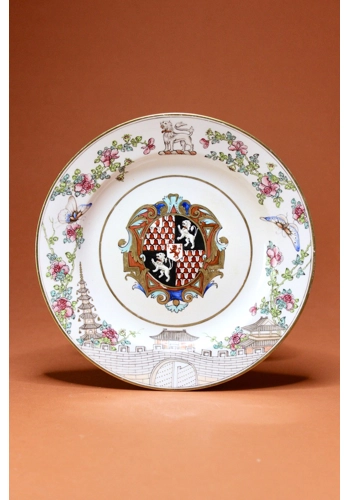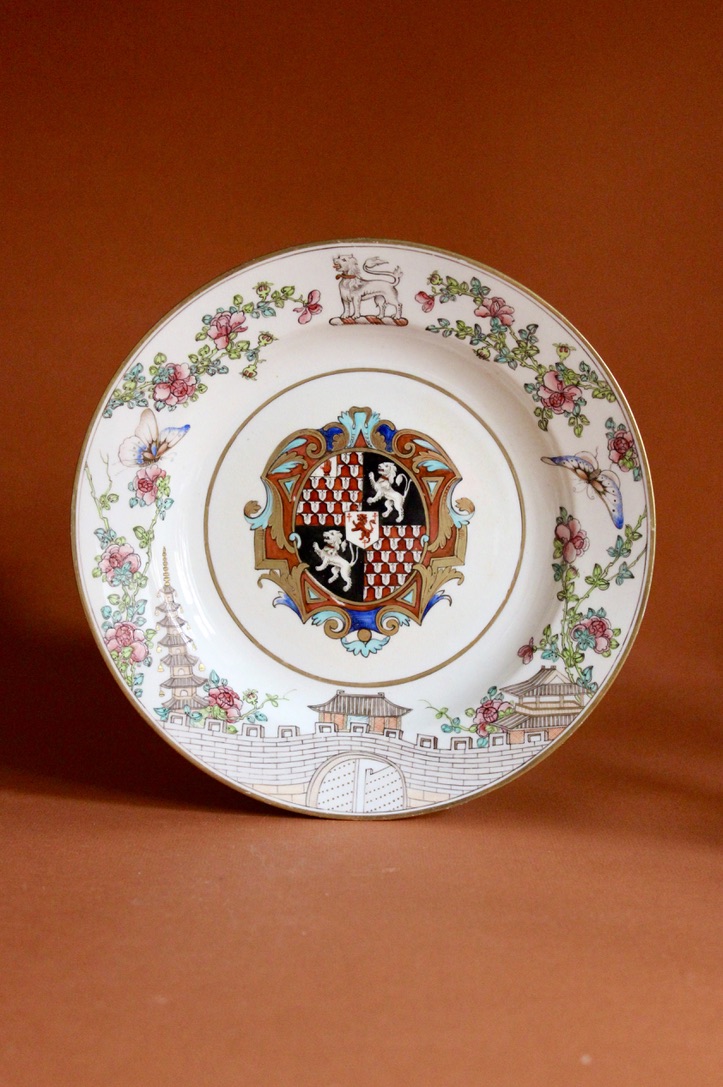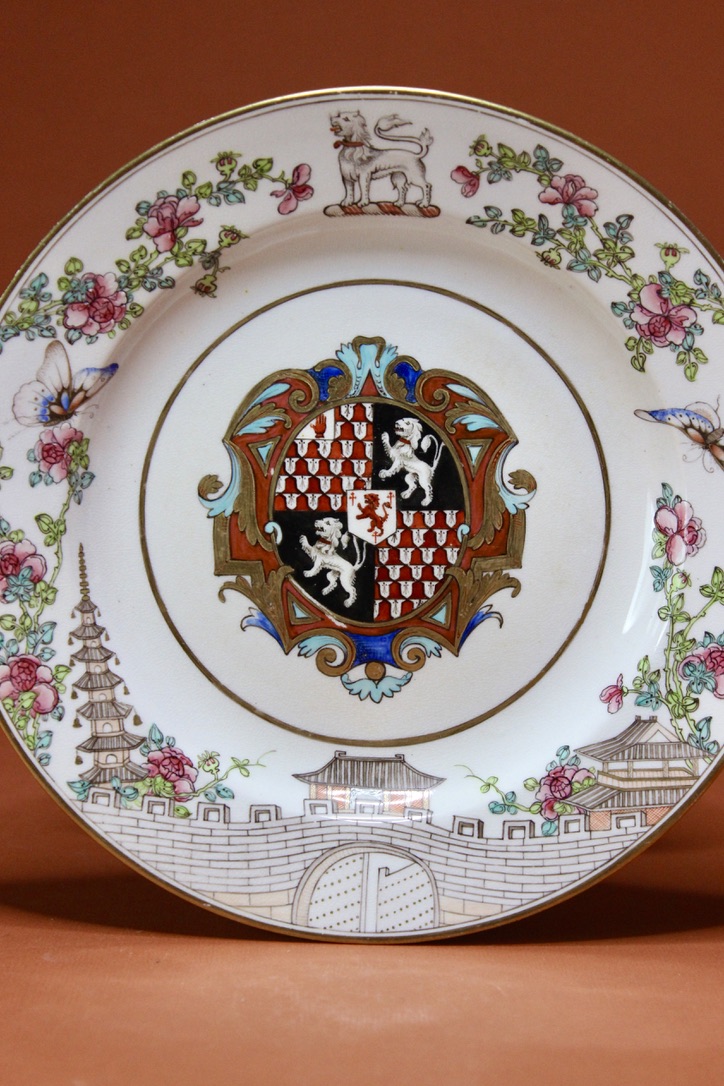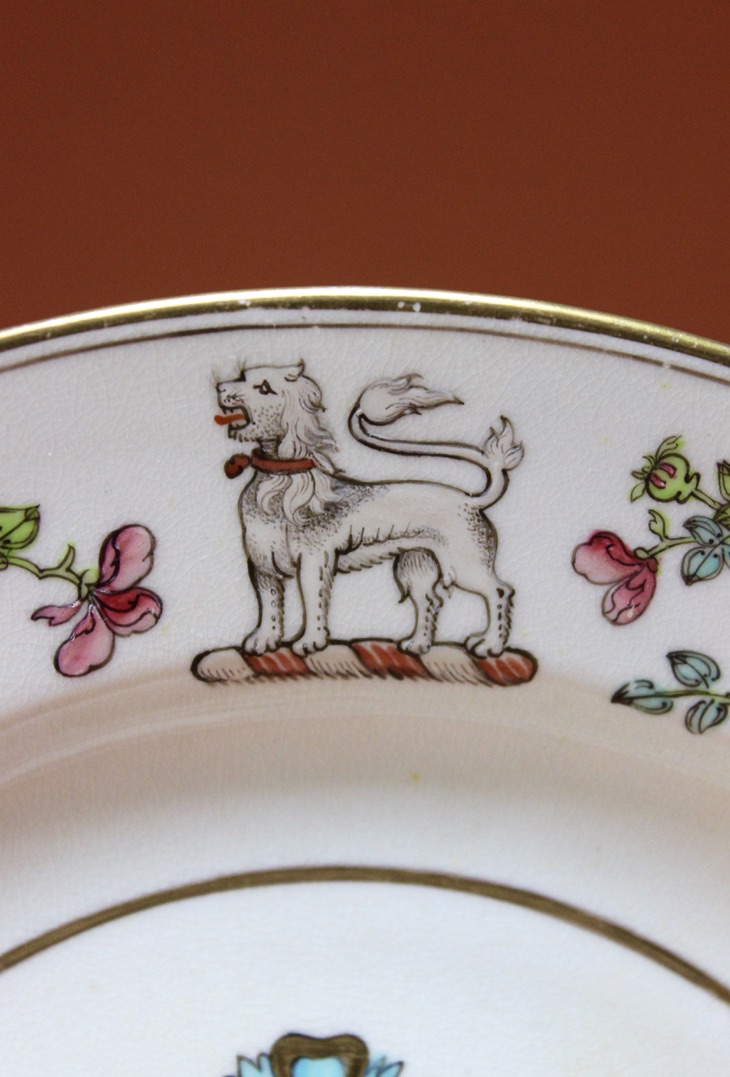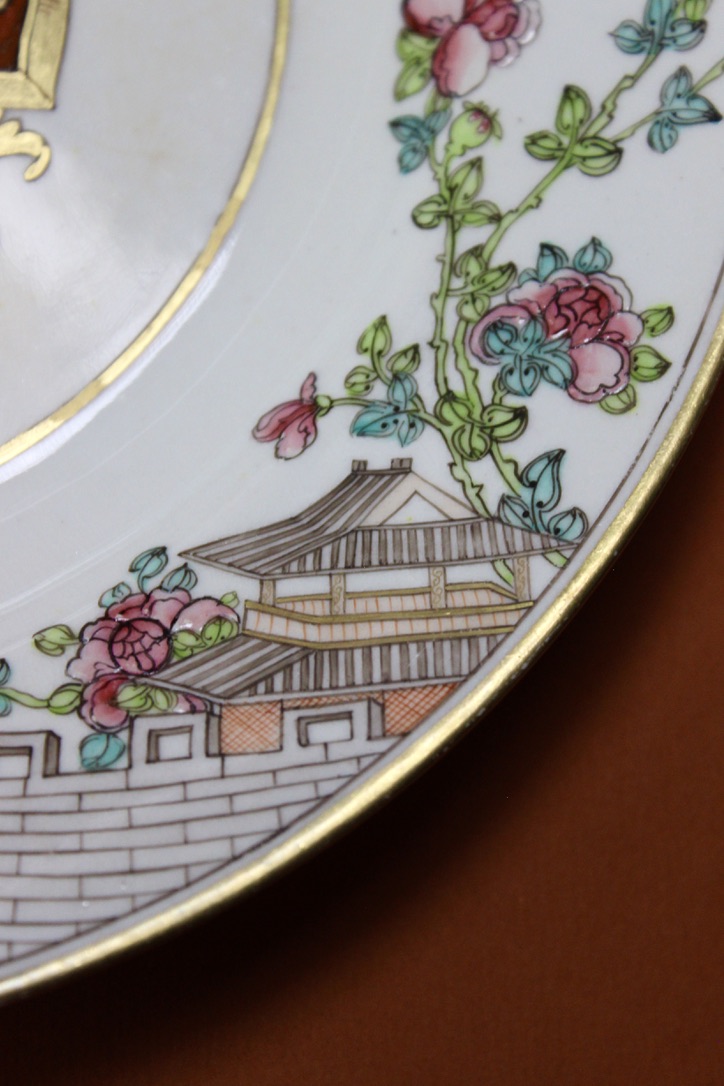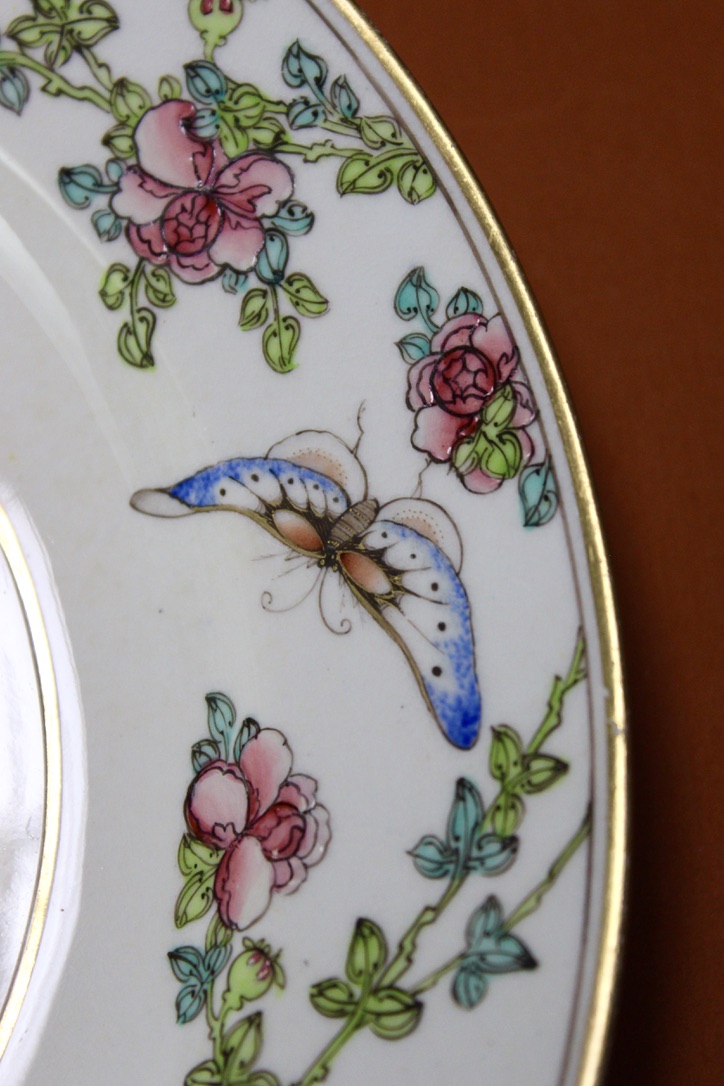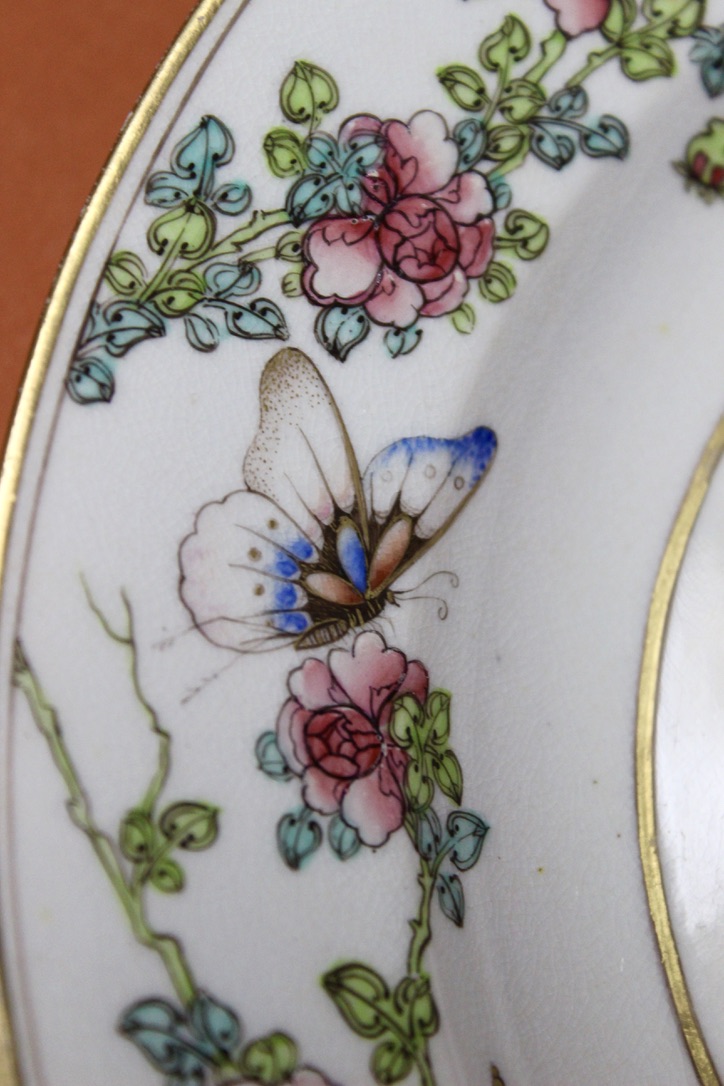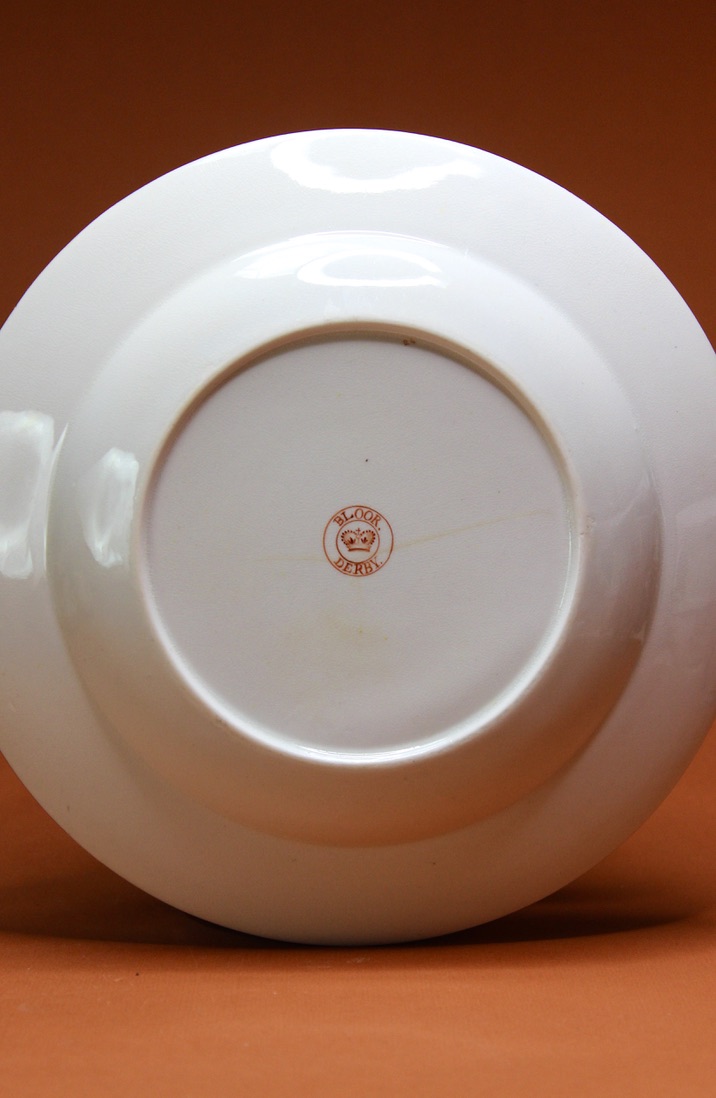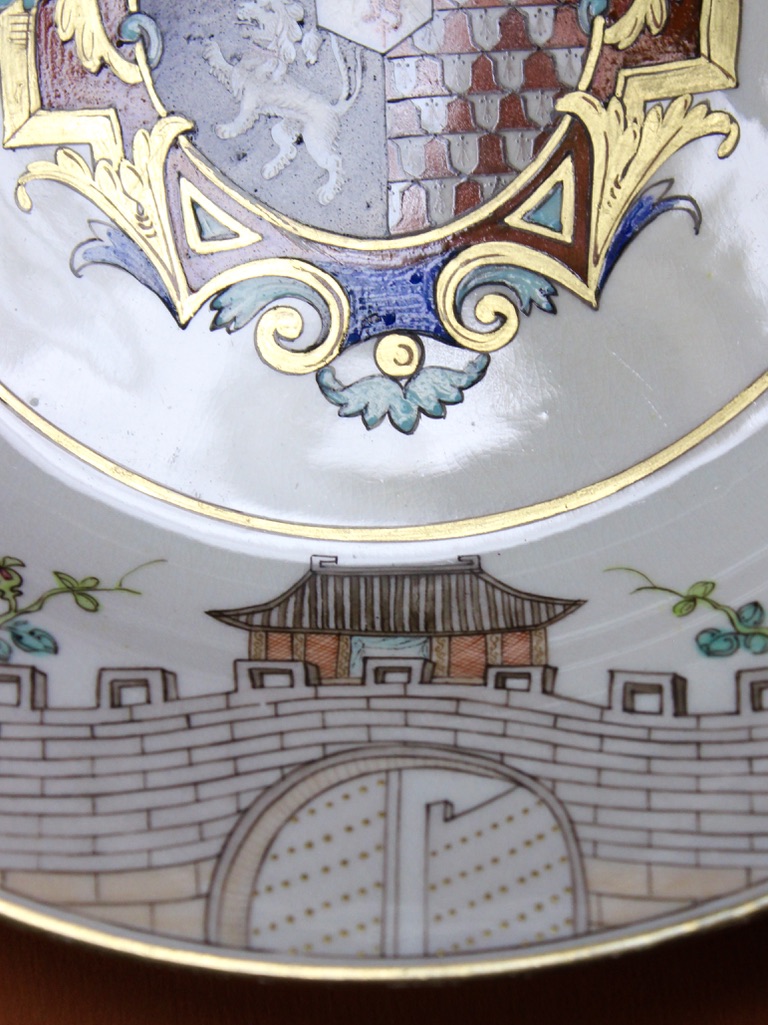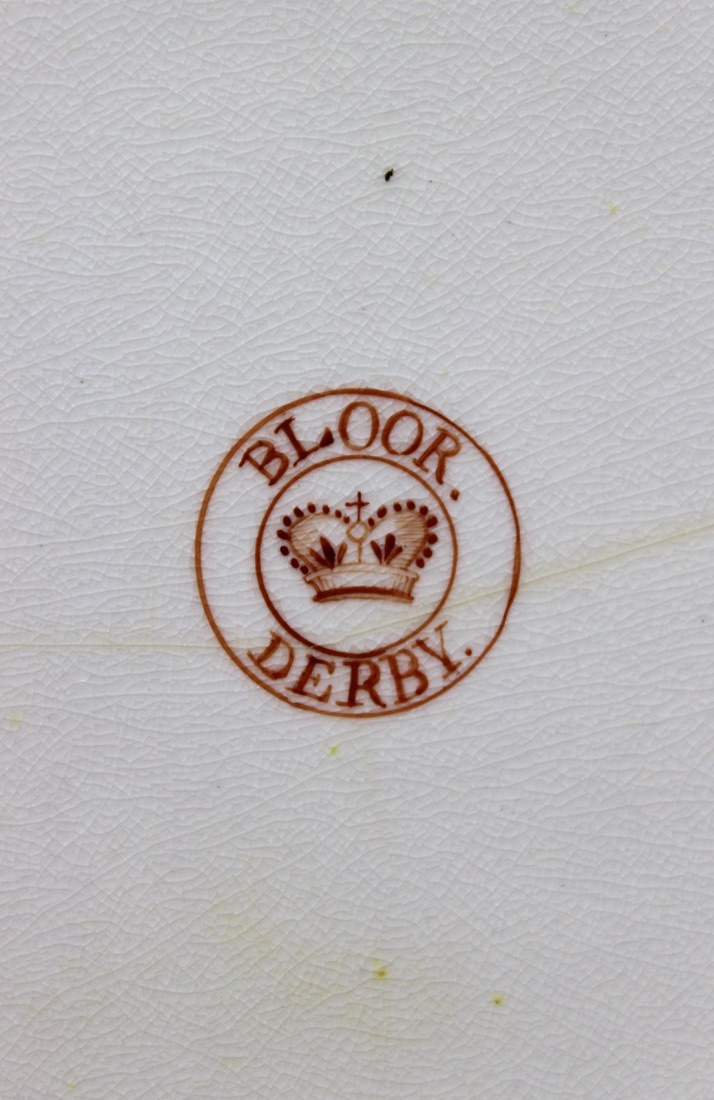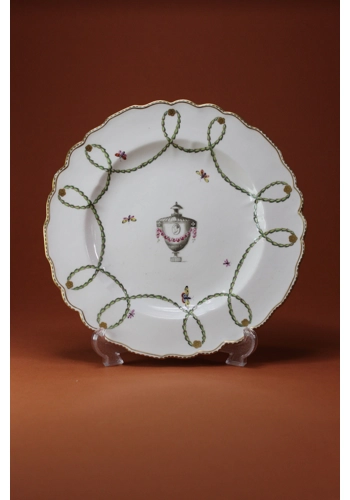Bloor Derby Armorial Plate c.1825
This Bloor Derby armorial plate made circa 1825 is a very interesting historical piece of porcelain.
Hand painted with the coat of arms of Sir Thomas Gresley, 4th Baronet of Drakelow (died 1746) and his wife Dorothy who was the daughter and heir of Sir William Bowyer, Baronet of Knipersley.
The Baronetcy of Gresley of Drakelow was created in the Baronetage of England on 29 June 1611 for George Gresley of Drakelow Hall, Derbyshire who was later High Sheriff of Derbyshire and Member of Parliament for Newcastle-under-Lyme.
It was from the marriage of George's great grandson, Thomas, the 4th Baronet to Dorothy Bowyer of Knipersley that this crest was created.
Their marriage was on the 5th April 1719 in Biddulph, Staffordshire.
The pattern of this plate is a direct copy from an earlier Chinese porcelain service made and decorated in the Yongzheng period.
It makes sense for a service displaying the combined coat of arms to have been commissioned after their wedding and possibly as a celebration of the union of the two families, so this would have been after 1719.
In this period we did not know how to produce porcelain in Europe so all porcelain was imported from China.
An order could be sent to China with drawings and instruction for the commission and a complete service would be produced and shipped back to Europe.
This took many months or longer and would have been prohibitively expensive and only available to the Royal and high houses of Europe, the nobility.
The Yongzheng reign period was between 1722-1735 and so it is reasonable to assume that the original service would have been made in this period.
The plate presented, however, was made in the Derby factory during the Bloor period which spanned from 1811-1848.
The mark on the back of this plate which dates from after 1825, is hand drawn. This required the plate to be centred on a wheel for the inner and outer circles to be applied and then the letters and crown to be hand painted.
This was only done on what was considered the top quality items. This same mark was later replaced with a printed stamp and used on more usual production wares.
The quality of decoration on this plate is absolutely superb and follows the Yongzheng original faithfully.
It is possible that an complete replica service was produced by Derby. An alternative possibility is that a few of these plates were made by Derby as replacement pieces due to breakages of the original plates.
The coat of arms is large and impressive with blue red black and turquoise enamels and lavishly gilded, surrounded by blossom branches and with two butterflies. At the top a white lion standing and at the bottom a wall and gate with a pagoda tower and rooves.
Its an absolutely stunning plate in both design and execution and has its historical roots firmly planted in English history.
The Gresley Baronetcy was the sixth oldest baronetcy in Britain until it became extinct on the death of the 13th and last Baronet in 1976.
The Gresley family's roots go back to the Norman conquest of 1066.
They were a Norman family, descended from Nigel de Stafford, the son of Robert de Stafford, scion of one of the most powerful families in England.
Nigel's son, also named Nigel, took the name Gresley after he acquired Castle Gresley in Derbyshire.
The Domesday Book recorded Nigel de Stafford holding the Manor of Drakelow near the conclusion of the 11th century, and his descendants, the Gresleys, continued to hold it for nine hundred years.
The family established the Priory of Gresley near their castle in Gresley before the year 1200.
Drakelowe Hall, latterly the family seat, was a large Elizabethan mansion.
The last of the Gresley family vacated Drakelowe Hall in 1931 after 28 generations had lived there.
The Hall was demolished three years later, in 1934, when the site was redeveloped as Drakelow Power Station, which itself was later demolished.
Maker's marks:
Hand painted circular Bloor Derby mark dating from 1825, and a small hand painted 24, probably a decorators mark
Dimensions:
224mm diameter
Weight:
304g
Age:
200 years
Condition:
Good antique condition: Enamels and gilding mostly good. An age relate hairline cross the back and a little discolouration to the verso. Some gilt loss at the edge
Maker:
Bloor Derby

